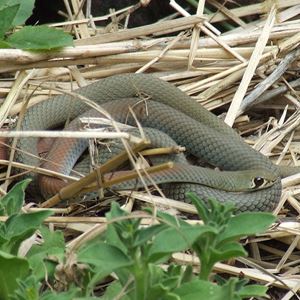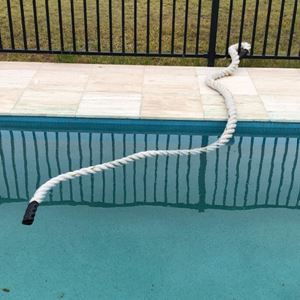Blog
Contact media@wires.org.au for enquiries or call 0416 272 153.
For the latest updates on bushfire recovery projects and emergency response
Read WIRES Emergency Recovery Plan and WIRES National Emergency Response Plan
Wildlife and Pool Safety
 Many of us enjoy taking a dip in backyard pools during summer.
Native animals also like to cool off, and often seek out water on hot
days.
Many of us enjoy taking a dip in backyard pools during summer.
Native animals also like to cool off, and often seek out water on hot
days.
Sadly wildlife and swimming pools don’t always mix and during extended
periods of hot, dry weather WIRES takes many calls about animals found
in swimming pools. The bandicoot pictured here was rescued from a
backyard pool!
In another incident, an unusual visitor to a public pool prompted
swimmers to flee the pool. WIRES was called to remove a snake that had
decided to go for a morning swim!
While the pool was cleared, a trained WIRES reptile rescuer rushed to
the scene. Pools can be a trap for snakes causing them to swim around to
the point of exhaustion before drowning.
 The snake was identified as a yellow-faced whip snake. These are
fast-moving, shy snakes that cause little harm. They are mildly venomous
with a bite like a bee-sting. Sadly their brownish colour makes them
easily misidentified as eastern brown sankes.
The snake was identified as a yellow-faced whip snake. These are
fast-moving, shy snakes that cause little harm. They are mildly venomous
with a bite like a bee-sting. Sadly their brownish colour makes them
easily misidentified as eastern brown sankes.
The snake then fell into the skimmer trough around the perimeter of
the pool. The fast-flowing water was a certain death-trap but rescuer
Rowan had luckily already removed part of the covering grid and was able
to grab the snake when it reached the pump-inlet grid. After an
assessment and a rest the whip snake was released into nearby bushland,
tired but none the worse for its ordeal.
WIRES has also rescued many birds, lizards, bandicoots and even gliders
that were found exhausted and waterlogged in pools across the state. The
animals frequently have to be brought into care and monitored for
possible water inhalation and pneumonia.
 If you own a swimming pool there are some simple things you can do to
assist wildlife. Always drape something over the edge of your pool so
that animals have a surface to grab hold of and climb out.
If you own a swimming pool there are some simple things you can do to
assist wildlife. Always drape something over the edge of your pool so
that animals have a surface to grab hold of and climb out.
A length of heavy duty rope or even a bodyboard, secured at one end to
something heavy outside the pool, is ideal as it does not absorb water
and provides a platform for an exhausted animal to rest on.
Pool steps are also frequently too high to allow animals an easy exit
and placing bricks or large stones to the side of each step can make it
easier for animals to gain a foothold and climb out.
Always check your pool regularly (twice daily) including in the skimmer
box. If you do find any animal trapped in a pool, call WIRES immediately
on 1300 094 737 for advice.
Search
Newsletter
Stay in touch and get our regular rescue stories, WIRES updates and a free copy of our 15 Ways to Help Wildlife ebook
Recent Posts
- Emergency Response Training for Wildlife Volunteers
- WIRES Introduces New Wildlife Rehabilitation Governance Courses in Collaboration with NPWS
- Community Support for Post-Bushfire Recovery of Wildlife in the Greater Blue Mountains
- Research Grants Program-2023 Recipients Announced
- National Koala Conference
- Nature Conservation Council's Bushfire Conference
- Support Stronger Nature Laws
- Helping Endangered Cockatoos: WIRES Grant Success Story
- Landmark Conservation Project Ensures The Future of The Northern Bettong
- Wildlife Road Collisions Unveiled
